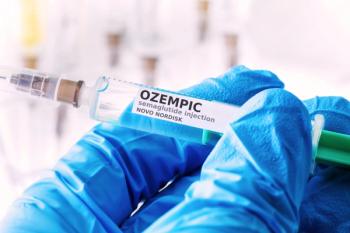
- The Application Notebook-02-01-2012
- Volume 0
- Issue 0
New HPLC/UHPLC Assay Methods for Impurities in Tetracycline
Tetracycline (TC), a common antibiotic used to treat urinary tract infections, acne, gonorrhea, and other conditions, yields a toxic degradation product, 4-epianhydrotetracycline (EATC). General Chapter 226 of the U.S. Pharmacopeia and National Formulary (USP-NF), referred to by monographs for epitetracycline and drug products containing tetracycline hydrochloride (TC-HCl), prescribes an antiquated assay for EATC impurity in TC.
Tetracycline (TC), a common antibiotic used to treat urinary tract infections, acne, gonorrhea, and other conditions, yields a toxic degradation product, 4-epianhydrotetracycline (EATC). General Chapter 226 of the U.S. Pharmacopeia and National Formulary (USP-NF), referred to by monographs for epitetracycline and drug products containing tetracycline hydrochloride (TC-HCl), prescribes an antiquated assay for EATC impurity in TC. This method uses a self-packed column eluted with
chloroform. The EATC impurity elutes as a yellow band and is detected by its visible absorbance.
The TC-HCl drug substance monograph and some TC-HCl-containing drug products use a high-performance liquid chromatography (HPLC) method. This antiquated method, used to determine the amount of EATC and to assay TC, uses a large resin bead size HPLC column and the undesirable mobile phase component dimethylformamide.
This study reports HPLC and ultra HPLC (UHPLC) methods for assay of EATC in TC-containing drug products. After developing the HPLC method, it was transferred to a UHPLC system, which reduced the run time from 8 to 2 min. Both methods were evaluated using a TC-HCl drug product (TC-HCl capsules). The results from both methods exceed the specifications of the HPLC method in the USP TC-HCl monograph.
Conditions and Sample Preparation
The experimental setup and sample preparation procedures are described in Dionex Application Note 288 (now part of Thermo Fisher Scientific, Inc.).
Results and Discussion
Separation
The Thermo Scientific Acclaim PA2 column was chosen for this study because it contains a polar-embedded stationary phase with similar selectivity to a standard C8 or C18 stationary phase, but can be used under both lower and higher pH conditions and with highly aqueous conditions. Using the Acclaim™ PA2 and a gradient separation with an ammonium dihydrogen phosphate pH 2.2/acetonitrile mobile phase, TC and EATC were well resolved, but in the opposite elution order compared to the L7 column used in the TC-HCl monograph (Figure 1). After first developing the separation on a 3 µm, 4.6 × 150 mm PA2 column, the method was transferred to a 2.2 µm, 2.1 × 100 mm Acclaim PA2 column.
Figure 1
Conclusion
This study describes HPLC and UHPLC methods that can be used to assay TC and EATC in a TC-HCl capsule. Both methods meet or exceed the criteria in the appropriate USP monographs, are faster and show higher resolution, generate less waste, and use less hazardous organic solvents. These methods may be applicable to other TC-HCl-containing drug products.
Scan to receive complete application note.
Thermo Fisher Scientific (formerly Dionex Corp.)
1228 Titan Way, P.O. Box 3603, Sunnyvale, CA 94088
tel. (408) 737-0700, fax (408) 730-9403
Website:
Articles in this issue
almost 14 years ago
Separation of Heat-Degraded Recombiant Human EPO Proteinalmost 14 years ago
Faster, More Sensitive Determination of Carbamates in Drinking Wateralmost 14 years ago
Analysis of Over 15 Million Dalton Polymers by Aqueous SEC Methodalmost 14 years ago
Analysis of Paralytic Shellfish Toxinsalmost 14 years ago
Microwave Assisted Extraction of Dioxins and Furans Compared to SoxhletNewsletter
Join the global community of analytical scientists who trust LCGC for insights on the latest techniques, trends, and expert solutions in chromatography.





